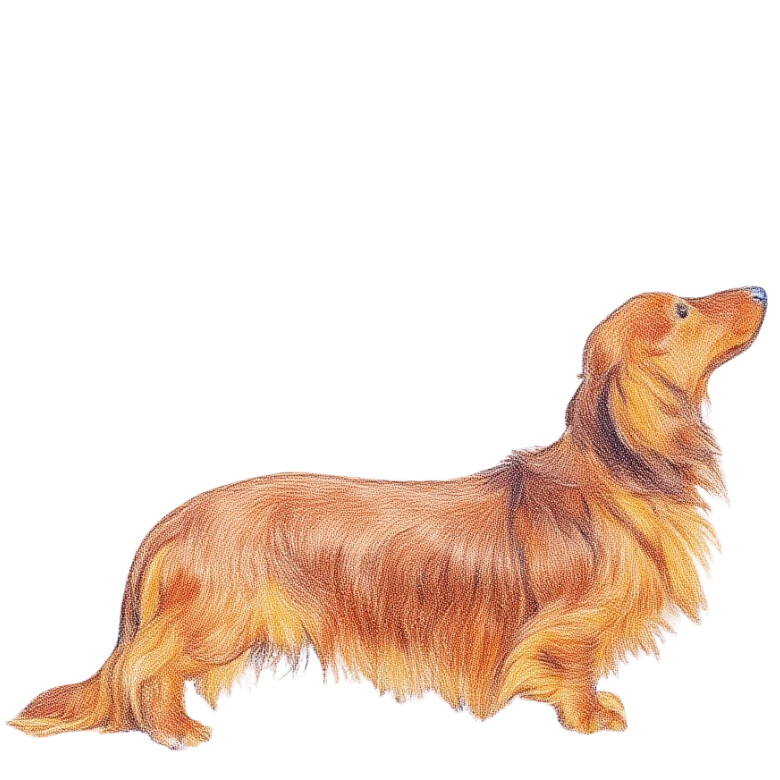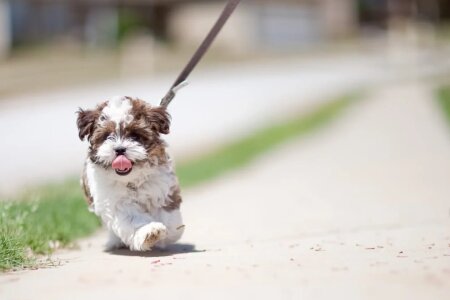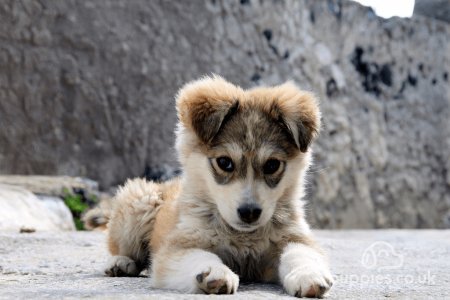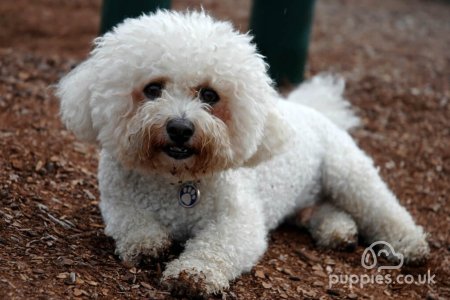Dachshund (Long Haired)
Among the variety of coat types, the long-haired Dachshund stands out for its silky fur and charming appearance. The long-haired version of this breed adds an elegant flair, with its smooth and lustrous coat. Here are some reasons why long-haired Dachshunds make excellent pets:
Unique Appearance: The long-haired Dachshund has a silky, elegant coat that sets it apart from other Dachshunds. This coat requires regular grooming to maintain its beauty, but for many, it's worth it for such a striking appearance.
Sociable Dogs: Long-haired Dachshunds are typically friendly and sociable.
Adaptive to Living Spaces: Their relatively small size and adaptable nature means long-haired Dachshunds can thrive in various living environments, including apartments, provided they get enough exercise.
Things to Consider when Looking at Long-Haired Dachshunds for Sale
When considering a long-haired dachshund, it's important to be aware of both their charming traits and the challenges they may present. Here are some factors to consider when buying a long-haired dachshund:
Grooming Needs: Long-haired dachshunds require regular grooming to maintain their silky coats. Expect to brush them frequently to prevent tangles and matting. They may also require occasional trimming or professional grooming services.
Temperament: Dachshunds are known for their lively and courageous nature. While they are affectionate and loyal, they can also be quite stubborn, which may pose challenges in training.
Health Considerations: Like many purebred dogs, dachshunds can be prone to certain genetic health issues. Health testing is advisable to screen for conditions such as Intervertebral Disc Disease (IVDD), a common problem due to their long back.
Physical Characteristics: With their signature long bodies and short legs, dachshunds have a unique appearance that requires special care to prevent back injuries. Proper handling and avoiding activities like jumping from heights are essential.
Exercise and Energy Levels: Despite their small size, dachshunds are active dogs that need regular exercise to stay healthy and happy. They enjoy walks and playtime but should not be overexerted due to their back structure.
History of the Long-Haired Dachshund
The development of the long-haired Dachshund is believed to be the result of crossbreeding between the smooth-coated Dachshund and various spaniels, giving it a glossy and elegant appearance. This variety was particularly favoured for hunting in colder climates where the extra fur provided warmth.
Long-haired Dachshunds may have descended from longer-haired dogs which occurred naturally when the breed was first established, or from deliberate introductions of dog breeds with longer coats to help with colder weather hunting.
Appearance
How big is the Long-Haired Dachshund?
The long-haired Dachshund is similar in size to other coat varieties but tends to look more elegant due to its flowing coat.
How heavy is a Long-Haired Dachshund?
While the Wikipedia entry does not specify exact weight figures for the long-haired variety, Dachshunds generally weigh between 7.3 to 15 kg.
What Colour is the Long-Haired Dachshund?
Long-haired Dachshunds boast a silky coat which may display a broad spectrum of colours and patterns. Common solid hues include red and cream, but these dogs may also have tan points. Other combinations include black and tan or chocolate and tan. These dogs can also have patterns such as dapple (merle), sable, brindle, and piebald. However, it's important to note that some patterns are considered non-standard.
Temperament
Do Long Haired Dachshunds make good guard dogs?
While Dachshunds are not typically considered good guard dogs due to their size, they do serve well as watchdogs. They are alert and will bark to signal unfamiliar presences, but they are unlikely to intimidate intruders given their diminutive stature.
Do Long Haired Dachshunds bark a lot?
Yes, Dachshunds are known to bark quite a bit. Their barking can stem from excitement, defense of their territory, or just sheer eagerness. Training from an early age can help manage excessive barking.
Are Long Haired Dachshunds easy to train?
Dachshunds, including the long-haired variety, can be somewhat challenging to train. They are intelligent but also independent and stubborn, making consistent and patient training essential. Positive reinforcement techniques work well to encourage desired behaviours.
Are Long Haired Dachshunds playful?
Absolutely, Dachshunds are lively and playful dogs. Their energetic nature makes them delightful companions, particularly when engaging in play with toys or games that utilise their natural hunting instincts.
Are Long Haired Dachshunds good with children and other pets?
Dachshunds often get along well with children, especially if they have been socialised from a young age. However, due to their hunting background, they might not always get along with smaller pets. Supervised interactions are advisable to ensure harmony in a multi-pet household.
Health
How long do Long Haired Dachshunds live?
Long Haired Dachshunds typically have a lifespan of around 12-16 years. With proper care, they can live long and healthy lives well into their senior years.
How much exercise does a Long Haired Dachshund need?
Long Haired Dachshunds require moderate exercise, usually about 30-60 minutes daily. This can include walks, playtime, and mental stimulation activities. They enjoy exploring and playing but also need to be careful with high-impact activities due to their long spines.
What are common health issues in Long Haired Dachshunds?
Long Haired Dachshunds, like other dachshunds, can be prone to certain health issues, such as:
Intervertebral Disc Disease (IVDD) due to their elongated spines;
Patella Luxation;
Hip Dysplasia;
Obesity, which can exacerbate spinal and joint issues;
Eye conditions such as cataracts or progressive retinal atrophy (PRA);
Skin conditions or allergies.
It is important to monitor their weight and prevent them from jumping from heights to reduce the risk of back injuries. Regular vet check-ups and genetic screenings can help identify potential health problems early.
Average Costs
How much does it cost to keep a Long-Haired Dachshund?
As a rough guide in pricing:
Cost to buy: For a well-bred long-haired Dachshund puppy, prices can range from approximately £500 to £3,000 depending on the breeder, location, and pedigree. Some high-quality breeding lines might even be priced higher, particularly if the parents have titles or come from exceptional pedigrees.
Other costs: On a monthly basis, you can expect to spend around £60-£100 for basic care. This includes expenses such as food, grooming, and routine vet visits. Special health screenings and preventative care can add additional costs as needed.
Specific Buying Guide
You can read our general buying guide here, with the most important thing being going to view your Dachshund (Long Haired) puppy, seeing it with its mother, and checking the quality of the breeder. More specifically, here is some Dachshund (Long Haired) puppy buying advice:
Understand the Dachshund's Characteristics: Dachshunds are known for their distinctive long bodies, short legs, and large paddle-shaped paws. Their long-haired variety has a silky coat with feathering on the legs and ears.
Be Aware of Genetic Health: Dachshunds can be prone to certain genetic health conditions. It's important to ensure that the breeder conducts proper genetic health testing on their breeding dogs.
Check the Breeder's Credentials: Dachshunds are a popular breed, and this can attract scammers. Verify the breeder’s credentials and ensure they adhere to ethical breeding practices.
Understand the Breed's Needs: Originally bred as hunting dogs, Dachshunds have a strong prey drive and can be quite energetic. They require regular exercise and mental stimulation despite their small size.
Adopting a Long-Haired Dachshund, Useful Reading and Rescue Organisations











